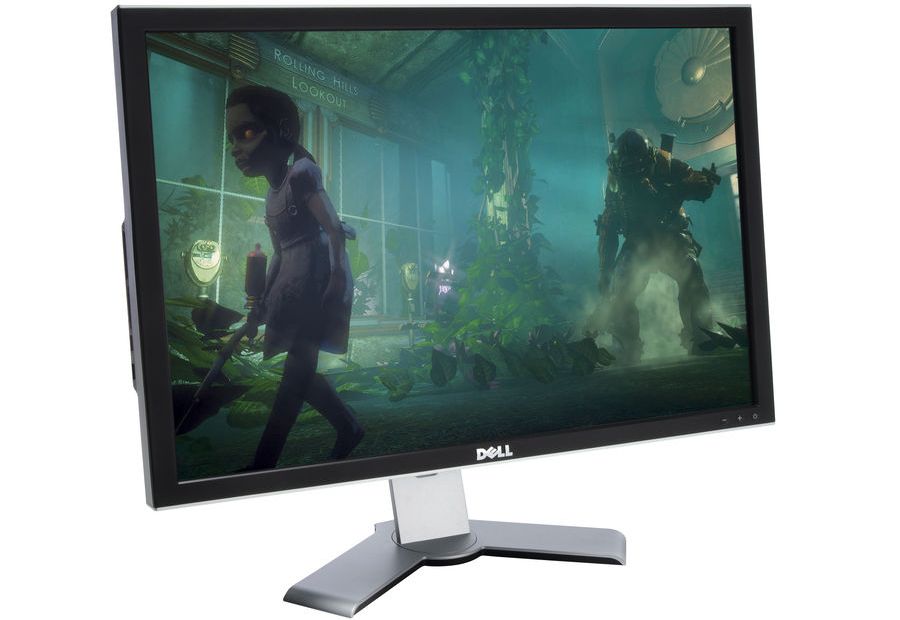Resolution revolution: why are desktops so late to the 4K party?
Eight million reasons to upscale

The king is dead. Long live the king. After a few years when stereoscopic 3D ruled supreme as the next big thing in PC displays, it's finally been usurped. High-DPI or high-resolution tech is the master of all it surveys, and that's a very good thing indeed.
Stereoscopic 3D was only a big noise in PC visuals because the industry was frantically searching for something new to promote – something to pimp and generally shout about. Not that 3D is entirely worthless, but 3D based on silly goggles has for us always been a niche activity. It's not the future of PC displays. But that's exactly how we see the role of high-res technology. So far, the history of high-res in desktop PCs has been one of frustration.
- Gaming notebooks are quickly approaching 4K. Check out the best gaming laptops right now
Way back in 2006, Dell rolled out the glorious 3007WFP and its 2,560 x 1,600 pixel grid (ed: IBM launched the T221 back in 2001, with a resolution of 3,840 x 2400 pixels, higher than 4K). There was much rejoicing, but the harsh truth for a long while after was that little progress followed.

In the meantime, 1080p resolutions and fabulously high-DPI displays have become routine in smartphones. Tablets with four megapixels or more are commonplace. Even affordable laptops and lightweight Ultrabooks have managed to match or even outstrip that magisterial Dell panel.
4K is the real deal
So, it's with much fanfare that we welcomed the first 4K PC monitors. Okay, they have price tags almost as preposterous as their pixel counts, but you've got to start somewhere. Likewise, it's good to see that more and more monitor makers are offering 27in monitors with healthy 2,560 x 1,440 panels. Overall, it feels like we're on our way again.
So that's why the time is ripe for getting a feel for the state of play in properly high-resolution PC displays, but what's available today? And will you have to make compromises in other areas in return for all those lovely pixels? There are plenty of other trends to keep up with in PC display tech. High refresh rate panels are gradually spreading out across the market, for instance.
BenQ, among others, is now offering LCD monitors with claimed flicker-free backlighting and Nvidia has its own ideas about how to enable seriously smooth frame rates, so it's time to get pedantic about flat panels. We've been waiting an awfully long time, but it feels like the high resolution revolution is finally coming to the desktop PC.
Get daily insight, inspiration and deals in your inbox
Sign up for breaking news, reviews, opinion, top tech deals, and more.
Rehashing the revolution
To be clear, there have always been high resolution PCs. In fact, given a large enough budget, the PC has offered the highest screen resolutions of any technology from its inception. In recent years, however, the PC was increasingly being left behind by mobile devices in what you might called the mainstream high-DPI explosion.
Currently, by far the most common resolution for new desktop PC monitors is 1,920 x 1,080, which is the same pixel grid offered by most high-end smartphones with mere four or five-inch screens. Compare that to tablets and things only look worse.
The Apple iPad's Retina upgrade arrived over a year and a half ago, bringing with it 2,048 x 1,536 pixels and setting off a resolution race. Today, you can buy a Google Nexus 10in tablet with a staggering native resolution of 2,560 x 1,600 pixels.
Technology and cars. Increasingly the twain shall meet. Which is handy, because Jeremy (Twitter) is addicted to both. Long-time tech journalist, former editor of iCar magazine and incumbent car guru for T3 magazine, Jeremy reckons in-car technology is about to go thermonuclear. No, not exploding cars. That would be silly. And dangerous. But rather an explosive period of unprecedented innovation. Enjoy the ride.